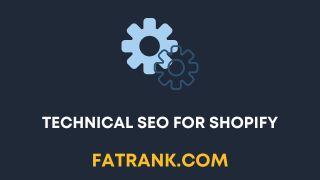
Technical SEO for Shopify
Contents
- Key Takeaways:
- Importance of Technical SEO for Shopify
- Technical SEO Issues and Solutions with Shopify
- Optimizing Shopify Store for SEO
- Shopify SEO Guide for Improving Visibility
- Conclusion: Taking Action for Better Shopify SEO Results
- Five Facts About Technical SEO for Shopify:
- FAQs about Technical Seo For Shopify
- What is Technical SEO for Shopify?
- What are some common Technical SEO issues with Shopify?
- How can Shopify store owners fix internal product links?
- What is Shopify\’s approach to handling Technical SEO issues?
- Why is Technical SEO important for Shopify stores?
- What are some tools to monitor and improve Technical SEO for Shopify stores?
- Other Shopify Guides
Key Takeaways:
- Technical SEO is the foundation of a successful Shopify store, and involves optimizing the website’s structure, code, and backend data to improve search engine visibility and user experience.
- Main technical SEO issues with Shopify include duplicate URLs, inefficient crawling, slow website speed, poor meta descriptions, and SSL security issues.
- To optimize a Shopify store for SEO, website owners should focus on responsive design, mobile-friendliness, and Google Analytics/Search Console setup.
- Using a Shopify SEO checklist can improve website optimization and visibility through keyword research, on-page optimization, and link building.
- To stand out in a competitive market, it is important to prioritize user experience, quality content, and trustworthiness in addition to technical SEO.
Importance of Technical SEO for Shopify
In the world of e-commerce, Shopify has emerged as one of the most popular platforms for online stores. However, merely having an online store on Shopify does not guarantee success. In this section, we’ll explore the importance of Technical SEO for Shopify stores. We will define what Technical SEO is and delve into why it is critical for the success of any online business on the Shopify platform.
What is Technical SEO?
Technical SEO is crucial for optimizing a website’s code and structure to ensure effective crawling and indexing by search engines like Google. This process involves improving technical elements such as HTML structure, site architecture, mobile responsiveness, and site speed, all of which can positively impact a website’s overall search engine ranking.
In addition, Technical SEO also focuses on addressing issues related to website code, server configuration, page speed, crawl errors, and indexing status for better visibility on search results pages. Shopify store owners looking to boost online sales should prioritize technical optimization. Otherwise, their Shopify stores may face issues with crawling and indexing by Google crawlers, negatively impacting user experience and overall search engine ranking.
An experienced Shopify developer can address common issues like duplicate content pages, indexing tags or categories, and wasted crawl budget through proper implementation of 301 redirects or canonical tags. Technical SEO is the essential foundation for effective Shopify SEO that leads to improved organic visibility for optimized web pages that meet Google algorithm requirements.
Why is Technical SEO important for Shopify?
Technical SEO is crucial for Shopify as it helps optimize the website to improve its organic search rankings. A well-done technical SEO implementation can significantly enhance the user experience, increase conversion rates, and reduce bounce rates.
Technical SEO ensures that your Shopify store is easily discoverable by search engines, providing a solid foundation for on-page optimization, content marketing initiatives, and link building strategies. Without proper technical optimization, your website may be difficult for search engines to crawl, missing out on valuable traffic and sales opportunities.
With the emphasis on mobile-first indexing, technical SEO becomes even more imperative, ensuring that your site has a responsive design, mobile-friendly pages, and fast loading speeds optimized for all devices.
Overall, Technical SEO plays an integral role in optimizing your Shopify store, not just for better visibility but also from a user perspective, meeting their needs quickly and providing them with a seamless shopping experience. So, it is clear why technical SEO is important for Shopify.
Technical SEO Issues and Solutions with Shopify
Shopify is a popular platform for ecommerce, but it does have some technical SEO issues that require attention. In this section, we will discuss the various problems and solutions associated with technical SEO in Shopify. These include duplicate content issues, slow website speed, and website structure, meta descriptions, and SSL security. Addressing these issues can have a significant impact on the ranking and visibility of your Shopify store.
Duplicate URLs and Canonical Tag
To effectively address the issue of duplicate URLs and ensure maximum visibility on search engine results pages, it is crucial for website owners to properly manage their website architecture and utilize canonical tags. These important HTML elements, located within the head section of a web page, can instruct search engines on which version of a URL should be considered as the original. By strategically implementing canonical tags, website owners can consolidate ranking signals and avoid dilution among multiple pages.
However, it’s not enough to solely rely on canonical tags. Website owners should also ensure that their website architecture and URL structure is properly organized by utilizing categories or collections. This will effectively prevent page duplication issues altogether and ensure that products and content receive optimal visibility on search engine results pages.
Finally, a useful addition to prevent duplicate URL issues is having an XML sitemap. This map directs search engine crawlers towards canonical versions of pages, helping to reduce crawl errors caused by paginated URLs. By following these guidelines and using canonical tags, website owners can improve their search engine rankings and avoid the problems of duplicate URLs.
Crawling Efficiency and Indexing
Efficient crawling and indexing are crucial for the good health of your Shopify website. Proper indexing requires an understanding of how search engines crawl your site’s pages. Crawl errors can prevent pages from being indexed, which can hurt your organic search traffic.
To ensure efficient crawling and indexing in Shopify, focus on resolving issues that pose a threat to SEO. This includes eliminating duplicate URLs and canonical tag issues, optimizing meta descriptions and URL structure, and improving website speed and structure. By doing so, you can maximize visibility on search engine results pages (SERPs) and attract more organic traffic to your site.
Additionally, use Shopify’s built-in analytics to monitor crawl stats and identify potential issues that need fixing. A combination of technical SEO expertise and attention to detail is critical for achieving high rankings on SERPs.
Slow websites can negatively impact user experience and result in lost revenue. Therefore, it is important to optimize your Shopify store’s speed and structure for better performance. This can include reducing image sizes, minimizing code and scripts, and using a content delivery network (CDN) to serve content faster. By prioritizing crawling efficiency and indexing, you can improve the overall health and success of your Shopify website.
Website Speed and Structure
When it comes to optimizing a Shopify store for search engines, website speed and structure are two critical factors that must be given top priority. These elements are vital to enhancing user experience, boosting online visibility, and ultimately growing the business.
A slow-loading website can adversely affect not only user experience but also search engine rankings. This is why optimizing images, minimizing JavaScript and CSS files, using a content delivery network (CDN), and caching are all essential techniques for increasing website speed.
Website structure also plays a crucial role in search engine optimization. When designing a website, it’s important to ensure that it is easy to navigate for both users and search engines. A logical category structure that organizes relevant pages hierarchically is key to effective website architecture.
Besides focusing on website speed and structure, it’s crucial to optimize web pages for mobile devices. Since the majority of searches are now happening on mobile, a responsive design and faster loading time are vital to ensuring a satisfactory user experience on smartphones and tablets.
By prioritizing website speed and structure, Shopify store owners can enhance their online visibility, driving increased traffic and higher sales conversion rates. By effectively addressing these issues, they can ultimately grow their business to new heights.
Meta Descriptions and URL Structure
Meta descriptions and URL structure are essential components of technical SEO for Shopify. A well-crafted meta description provides a brief summary of a webpage’s content and appears in search engine results. On the other hand, URL structure refers to the hierarchy of a page’s URL. Properly optimized meta descriptions and URL structures can significantly improve a site’s ranking, enhance user navigation, and increase website traffic.
To optimize a Shopify store for SEO, one must pay close attention to meta descriptions and URL structures. By ensuring that meta descriptions contain relevant keywords and accurately depict the webpage’s content, click-through rates from search engines can significantly improve. Additionally, creating a logical and organized URL structure can provide user-friendly URLs while also signaling search engines to prioritize certain pages over others.
It’s worth noting that meta descriptions and URL structures are crucial factors in SEO, and small mistakes in either area can negatively impact rankings and traffic. For example, choosing irrelevant or repetitive URLs or meta descriptions can confuse search engines and potential website visitors.
Once upon a time, a Shopify store owner neglected their meta descriptions and solely relied on default URLs. Consequently, this led to low visibility in search results, despite quality products being offered at competitive prices. However, after conducting an audit focused on optimizing meta descriptions and improving the URL structure’s organization, sales improved dramatically due to higher visibility in search results.
Lastly, it’s vital to have a secured SSL status for your website because leaving it unsecured can negatively affect your SEO ranking.
SSL Pending and Common Technical SEO Issues
Securing a website is vital for Technical SEO of Shopify. An SSL certificate is essential to encrypt sensitive data, including passwords and payment information, and provide secure connections between the server and browser. Failure to implement SSL can lead to security breaches, penalties from search engines, and a drop in website ranking.
Moreover, SSL plays an important role in SEO as Google and other search engines prioritize secure websites. Websites without SSL certificates are regarded as insecure. Websites with secure protocols receive better visibility in search results, leading to increased traffic.
Crawling efficiency and indexing problems, slow website speed, duplicate URLs, canonical tag errors, improper meta descriptions, and URL structure are common technical SEO issues. Hence, ensuring proper implementation of Technical SEO becomes crucial for ecommerce businesses today.
To maximize Shopify store visibility, optimizing the website through responsive design by making it mobile-friendly is also important. It includes setting up Google Analytics and Search Console to track relevant data while adhering to the Shopify SEO checklist for website optimization.
Shopify’s default pages do not come pre-optimized, so proactive optimization of keyword research by adding them in on-page optimization elements like alt text images and link titles, along with title tags and descriptions across all pages using relevant keywords, is essential in boosting SERP rankings.
Don’t let easy fixes stop your business from succeeding online! Take action today by creating an ideal tech stack for flawless Shopify Technical SEO integration so that you don’t miss out on the opportunities available which can help improve your store visibility amongst thousands of ecommerce websites vying for top search engine rankings.
Transform your Shopify store into an SEO powerhouse with responsive design, Google Analytics set up, and timely resolution of SSL pending and common technical SEO issues.
Optimizing Shopify Store for SEO
Optimizing your Shopify store for SEO can make all the difference in how people find and interact with your online business. In this section, we’ll go over some key aspects of optimizing your Shopify store for SEO, including ensuring responsive design and mobile-friendliness, setting up Google Analytics and Search Console, using relevant keywords and meta tags, and creating quality content. Following a Shopify SEO checklist for website optimization is also important. Don’t leave your SEO up to chance – follow these guidelines to help your business thrive online.
Responsive Design and Mobile-Friendliness
A website’s responsiveness and mobile-friendliness are critical factors for Google rankings. A responsive design creates a smooth user experience when viewing the site on various devices, including smartphones and tablets. Having mobile-friendly designs improves bounce rates, dwell time, social sharing, and conversions.
To enhance a Shopify store’s mobile friendliness and responsiveness, web developers need to optimize images to fasten page load times. Ensuring that the site uses an appropriate font size that users can read without difficulties is also crucial. In addition, creating a sleek user interface with buttons that are easy to tap helps support usability on all devices.
It is also essential to test websites on different screen sizes using emulators or actual physical devices frequently. This helps identify any fixation issues early before they affect the website’s performance.
Incorporating contextual keywords throughout the design helps boost search engine optimization (SEO). Relevant tags and title tags improve communication between your site and internet search engines. A sitemap can be included in your robot text file which will help Google crawl through all of your content quickly.
Ensure that Shopify stores follow best practices themes with built-in SEO controls managed automatically for better results to save time rather than customizing off-the-shelf alternatives.
With today’s increasing use of portable devices such as smartphones and tablets daily, optimizing for these platforms is more critical than ever before. Therefore, having a mobile-first design strategy means you can target users across different device platforms leading to increased traffic conversion while meeting customer demands effectively.
Get ready for some serious data analysis with Google Analytics and Search Console setup for your Shopify store.
Google Analytics and Search Console Setup
If you want to gain valuable insight into how your Shopify store’s online presence impacts performance, it’s crucial to follow a 5-step guide to setting up Google Analytics and Search Console.
First, create a Google account or use an existing one to sign up for these essential services. Then, add your Shopify store URL to both accounts for verification purposes.
Next, install tracking codes on your Shopify store to enable data collection by Google Analytics. This will help you track important metrics such as bounce rates, page views, and conversion rates, providing valuable insights into visitor behavior that can help you optimize your website accordingly.
To enhance website indexing and ranking by search engines, submit a sitemap of your Shopify store content. It’s equally important to set up notifications for receiving alerts in case of issues with crawlability, site performance, or security.
Apart from the basic setup, it’s crucial to ensure that both accounts are properly linked for data sharing. Making use of available metrics can also help maximize the benefits of your Google Analytics and Search Console setup.
Neglecting this process can result in missing out on valuable customer data, leaving online businesses unaware of significant opportunities for growth. By following these steps carefully, businesses can leverage data-driven decision-making processes towards progress. So, don’t delay; set up Google Analytics and Search Console today!
Shopify SEO Checklist for Website Optimization
If you’re looking to optimize your Shopify website, a comprehensive checklist is essential to ensure that it performs well on search engines. This Shopify SEO checklist includes a variety of technical SEO measures, such as URL structure, crawling efficiency, metadata alignment, and canonical tag implementation.
To start, it’s crucial to ensure that your website has a responsive design for mobile platforms and is mobile-friendly. Additionally, it’s essential to set up Google Analytics and Search Console to track your website’s performance regularly.
Using appropriate keywords in title tags, H1, meta description tags, and URLs can also significantly improve your Shopify website’s performance. Optimizing images with relevant alt text can also help with loading times.
It’s also necessary to audit product listings to avoid issues with duplicate content for your eCommerce website. To optimize your Shopify store even further, consider conducting keyword research activities, removing duplicate content on web pages, and planning link building activities for more visibility in a competitive market.
To learn more about boosting your Shopify store’s visibility, check out our comprehensive SEO guide. When it comes to Shopify SEO checklist for website optimization, this guide has everything you need.
Shopify SEO Guide for Improving Visibility
If you’re looking to improve the online presence of your Shopify store, this guide can help. We will discuss various techniques for Shopify SEO that can help improve visibility. This will include keyword research, on-page optimization, link building, and duplicate content issues. Additionally, we will explain how Shopify SEO can benefit your marketing efforts in a highly competitive digital market. Are you ready to take your Shopify SEO game to the next level?
Keyword Research and On-Page Optimization
To effectively perform keyword research and on-page optimization, it is essential to follow three crucial steps:
- Conduct research on competitor websites
Researching the content on competitor websites allows you to identify which keywords they are targeting. This information can help you determine which keywords to target on your webpages.
- Use Keyword Research Tools
There are many keyword research tools available online that can help you discover profitable keywords. These tools provide crucial data such as search volume, competition, and cost per click.
- Optimize Webpage Content
Once you have identified your target keywords, it’s time to optimize your webpage content. This includes adding the keyword in critical locations such as the title tag, meta description, H1 tag, and body text.
It’s also essential to avoid keyword stuffing, which is overusing the same keyword repeatedly on a page in an attempt to manipulate rankings. A natural content flow should be maintained while incorporating keywords strategically.
It’s worth noting that search engine algorithms frequently change their ranking policies. Thus, it’s crucial to monitor these changes to ensure sustained successful performance for businesses.
In summary, a proper keyword research and on-page optimization strategy positively influences organic traffic. It ensures that product pages display for accurate searches, leading to higher ROI for businesses by making their products visible when potential customers need them most – during search results display. Combating duplicate content and building quality links can give Shopify stores the edge they need to dominate the search results.
Link Building and Duplicate Content Issues
When it comes to Shopify SEO, link building and avoiding duplicate content issues are paramount. The benefits of having high-quality backlinks cannot be overstated, as they increase your domain authority and drive organic traffic. However, the quality of the links matters just as much as the quantity. Low-quality links can hurt your ranking, which is why it’s critical to secure links from relevant and high-quality sources, such as through guest-posting or broken link building.
In addition to link building, avoiding duplicate content is crucial for search engine optimization. Duplicate content can cause confusion for search engines, hurting your website’s visibility. To combat this, it’s essential to ensure that all product descriptions are unique and minimize similar pages with different URLs. By using canonical tags for duplicate pages and avoiding manufacturer’s descriptions, you’ll increase your chances of appearing at the top of search engine results pages.
Regularly auditing inbound links and removing spammy or irrelevant sites can help maintain a healthy link profile, as can staying up-to-date on changes to Google algorithms. By implementing proper technical SEO measures, you can ensure your store is optimized for organic search results, giving you a competitive edge in the crowded e-commerce market.
Through maximizing the potential of link building and avoiding duplicate content issues, your store’s visibility in search results can skyrocket. Trustworthy backlinks from authoritative sites and unique content can help distinguish your store from the competition. With the help of Shopify SEO strategies, you can optimize your online presence, stand out in search results, and boost sales.
Shopify SEO for Standing Out in a Competitive Market
To succeed in a fiercely competitive market, Shopify stores must prioritize investing in Search Engine Optimization (SEO) to improve their online visibility. Shopify SEO entails optimizing various technical elements of the website to obtain higher rankings on search engines like Google. Technical SEO is especially crucial for Shopify stores since it ensures that the website’s technical aspects are optimized for search engine crawlers. Without it, stores may struggle to rank high on the Search Engine Results Pages (SERPs).
In addition to adhering to technical SEO best practices such as optimizing URLs and boosting website speed, Shopify sellers should make sure that their websites have a responsive design and are mobile-friendly. Additionally, setting up Google Analytics and Search Console is imperative for obtaining crucial insights on how visitors locate the online store.
For optimal Shopify SEO performance, sellers must steer clear of typical problems like duplicate content and broken URLs. Conducting thorough keyword research should also be prioritized to create efficient on-page optimization strategies. With heightened competition in the online space, dedicating adequate time and resources to effective Shopify SEO can drive sales and conversions, ultimately leading to business success.
Conclusion: Taking Action for Better Shopify SEO Results
In order to achieve better Shopify SEO results, it is crucial to take action. Technical SEO plays an important role in improving your website’s search engine rankings. By optimizing your website’s loading speed and fixing any broken links, you can enhance your website’s performance on the search engine results page (SERP).
Implementing technical SEO practices increases the efficiency of search engine bots crawling your website. It’s important to pay attention to website architecture, mobile responsiveness, and meta tags to improve user experience and increase website traffic. A better user experience can lead to better conversion rates, translating into more sales and higher revenue.
It’s crucial to monitor your website’s performance regularly and analyze the data to make improvements accordingly. Regular website audits and the use of tools like Google Search Console can help identify technical SEO issues that may be impacting your website’s performance.
By taking these technical SEO measures, you can achieve higher search engine rankings for your Shopify website, increase website traffic, and ultimately generate more sales and revenue. So, take action now for better Shopify SEO results.
Five Facts About Technical SEO for Shopify:
- ✅ Technical SEO is important for e-merchants as it helps search engines crawl and index their site more efficiently, leading to better ranking on search engine result pages (SERPs). (Source: BoostCommerce)
- ✅ Shopify collections can create duplicate URL issues for products belonging to collection pages. (Source: Search Engine Land)
- ✅ The duplicate content can make it difficult for search engines to determine which URL to index and rank, and split link building power. However, the canonical tag can solve the first problem but not the second. (Source: Search Engine Land)
- ✅ Fine-tuning the technical SEO of a Shopify store is a must for better ranking on SERPs, by improving page speed, site structure, meta descriptions, URL structure, and coding activities that can make crawling easier. (Source: BoostCommerce)
- ✅ Shopify handles many technical SEO issues, but there are still things that need to be done through a technical SEO audit done in three steps: manually checking the website, crawling the website with a tool like ScreamingFrog, and checking Google Search Console. (Source: Logeix)
FAQs about Technical Seo For Shopify
What is Technical SEO for Shopify?
Technical SEO for Shopify is the process of tweaking a website to help search engines crawl and index it more efficiently. This leads to better ranking on search engine result pages (SERPs).
What are some common Technical SEO issues with Shopify?
Common Technical SEO issues with Shopify include duplicate content, directory URL structure, missing alt tags, slow loading times, and more. These issues can be fixed by modifying the theme, adding meta tags, compressing images, and other techniques.
How can Shopify store owners fix internal product links?
Shopify store owners can fix internal product links by adding redirects and using the canonical tag. Modifying the theme and meta field may also help.
What is Shopify\’s approach to handling Technical SEO issues?
Shopify\’s platform is user-friendly, but some technical aspects are predetermined. Though Shopify handles many Technical SEO issues, basic problems such as duplicate content can make it difficult for search engines to determine which URL to index and rank, and split link building power.
Why is Technical SEO important for Shopify stores?
Technical SEO is important for e-merchants as it helps search engines efficiently crawl and index their site, leading to better ranking on SERPs. This can be achieved by improving page speed, site structure, meta descriptions, URL structure, and coding activities.
What are some tools to monitor and improve Technical SEO for Shopify stores?
Google Search Console and crawling tools like ScreamingFrog can help Shopify store owners monitor and improve their Technical SEO. Setting up Google Analytics can also help monitor the performance of the store.
Other Shopify Guides
Check out our A-Z Shopify SEO Guides:
- A Guide To Robots.txt on Shopify

- Best SEO Apps for Shopify

- Best Shopify Themes for SEO

- Blogging on Shopify: How To Do It For SEO Traffic

- Can you change the Shopify URL Structure?
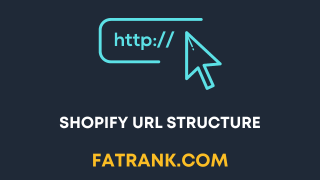
- Common Shopify SEO Issues
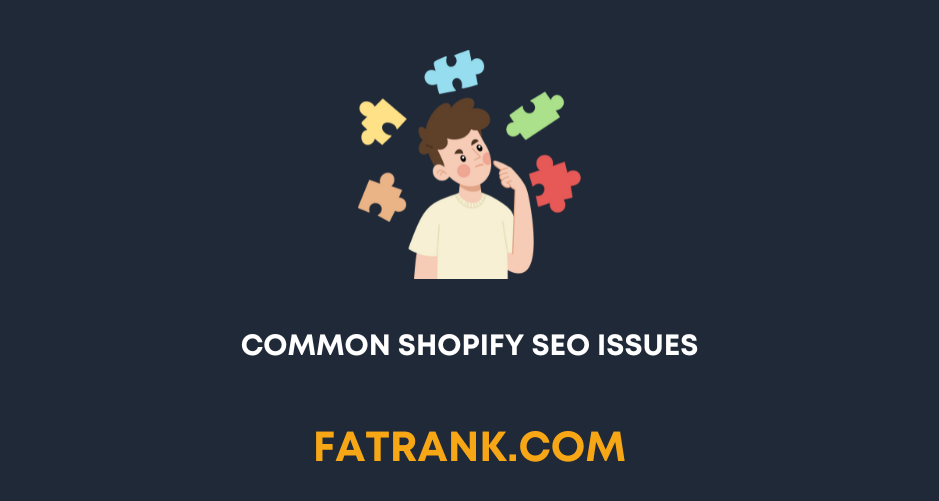
- Does Changing the Shopify Store Name Affect SEO
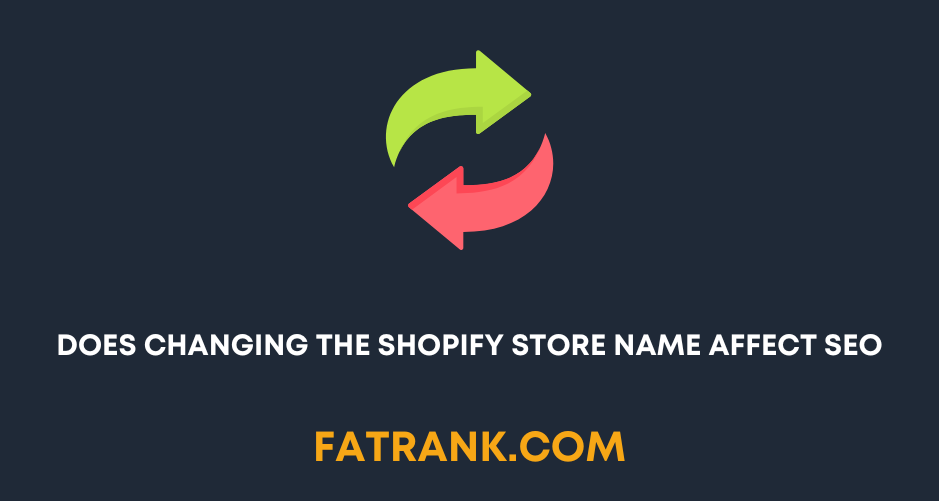
- Guide On Using Metafields In Shopify

- How Much Does Shopify SEO Cost

- How To Add Content To Shopify Collection Pages

- How To Add Keywords To Your Shopify Store For SEO
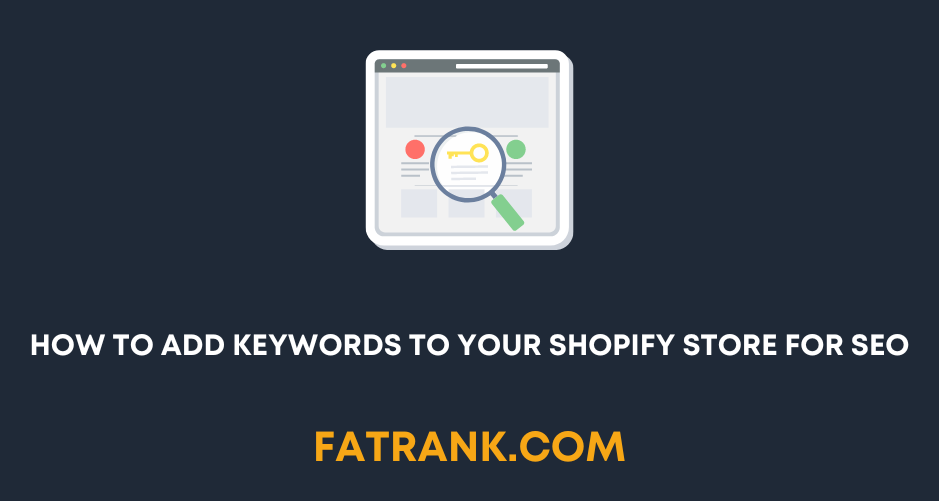
- How To Remove Duplicate Titles From Shopify Store
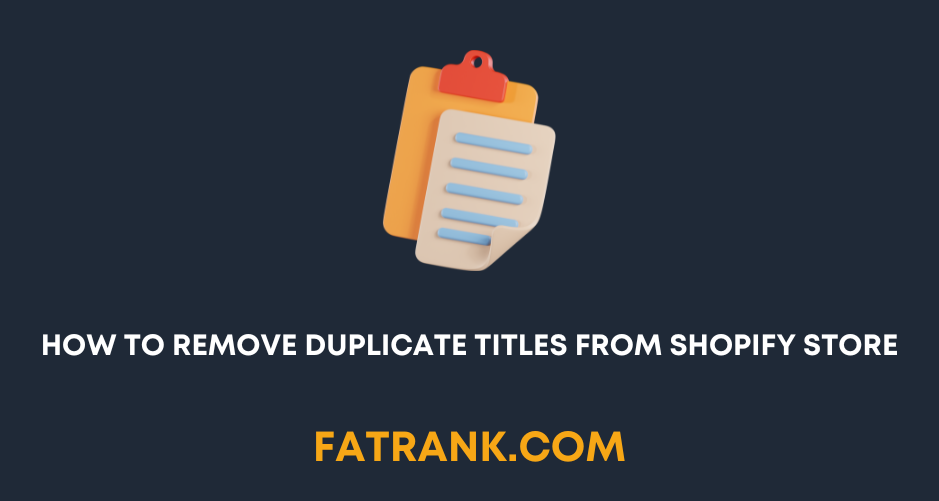
- How to Set up Multiple Shopify Stores Under One Domain

- Improving Search in Shopify Plus
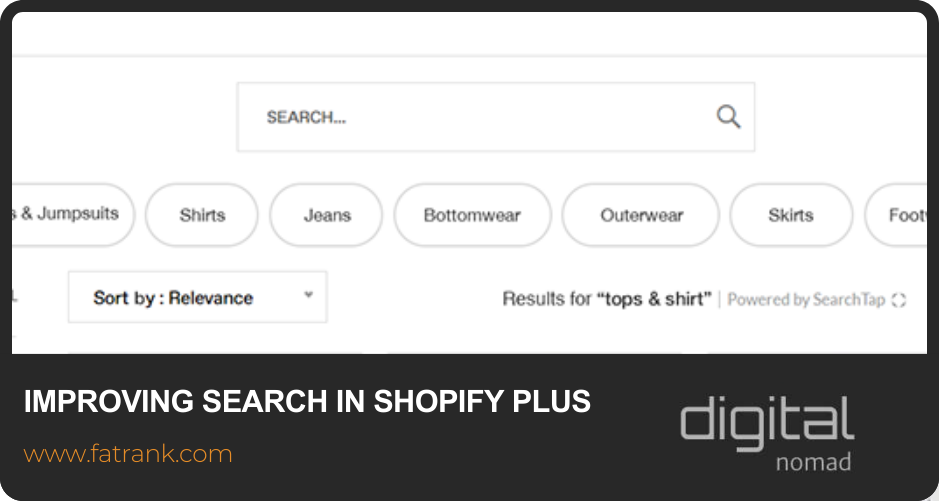
- Is Shopify bad for SEO? A Detailed Review

- Keyword Research for Shopify Stores

- Link Building for Shopify: Full Tutorial

- Shopify Breadcrumbs SEO Issues

- Shopify Collection Page SEO: The Definitive Guide

- Shopify Image Optimization: Speed & SEO Guide
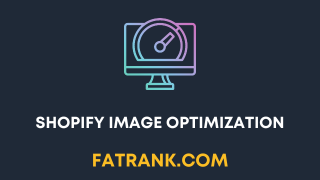
- Shopify International: Multi-Currency & Multilingual Setup

- Shopify On Page SEO Tutorial

- Shopify Plus SEO

- Shopify Plus SEO: Potential Limitations

- Shopify Product Tags SEO: Why It's Bad & How To Fix It
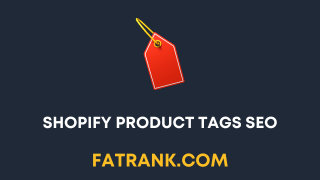
- Shopify Rich Snippets Tutorial: No App Needed

- Shopify SEO Agency

- Shopify SEO Case Study
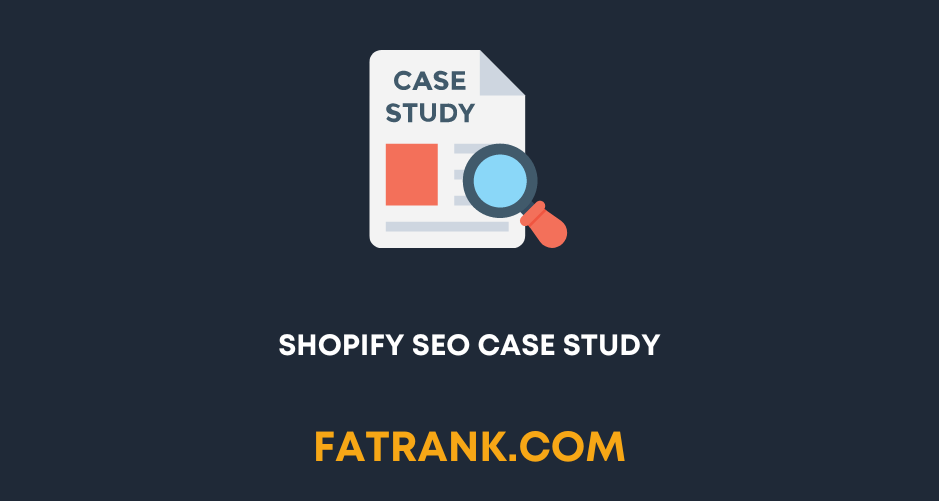
- Shopify SEO Checklist
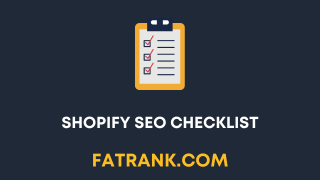
- Shopify SEO: The Definitive Guide

- Shopify Sitemap: Find & Submit Your XML Sitemap to Google

- Shopify Speed Optimization Guide
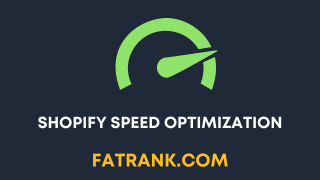
- Technical SEO for Shopify

- Why Is No One Buying From My Shopify Store

- Workarounds for the Shopify Variants Limit


About FatRank
Our aim to explain and educate from a basic level to an advanced on SEO and Social Media Marketing.
